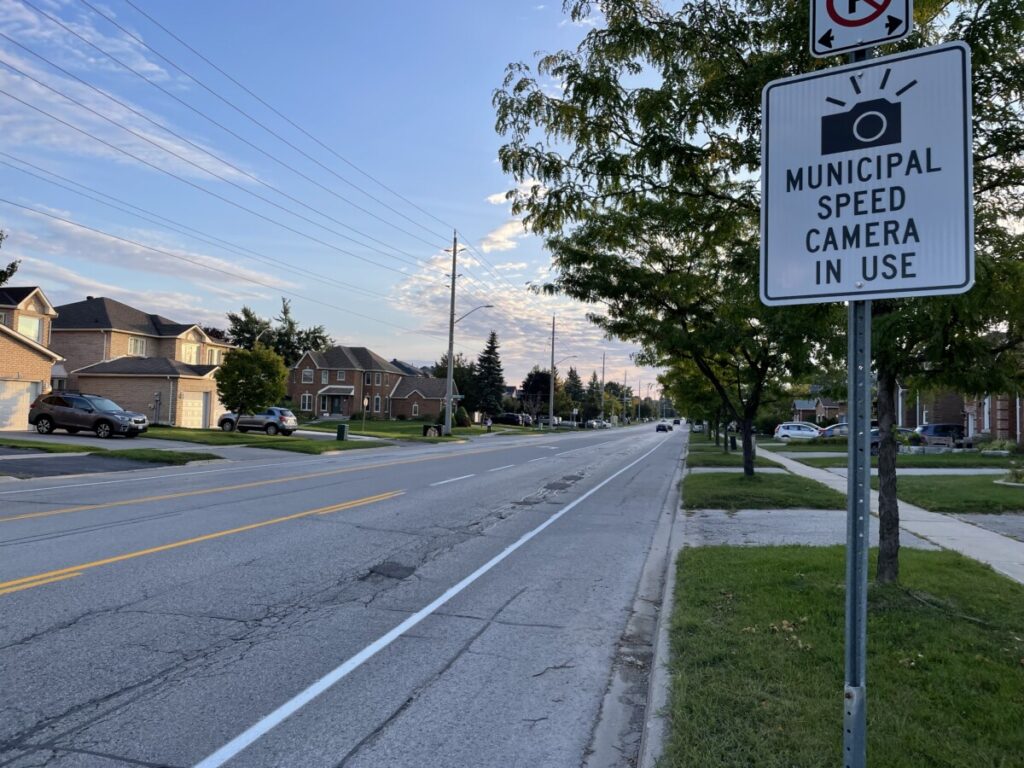
November 2025
John Torry famously said in 2020 “…I would be very happy if this entire program didn’t result in any tickets being issued because people got the message that there was going to be a consequence to their irresponsible behaviour.”
Now that Premier Doug Ford’s government has banned municipal photo radar, we have Mayor Olivia Chow saying that the city will have to find alternative funding to cover the costs of road safety programs, such as crossing guards and traffic enforcement police officers, which were previously paid for by speed camera revenue.
I thought the whole point of photo radar was to get people to slow down? Remember the old proverb: “Give them an inch and they’ll take a mile.” Well, it looks like Chow, and other mayors, took about 10 miles. I can certainly sympathize with cash-strapped municipalities, which are having to provide more and more services that used to be provided and funded by other levels of government.
Some will argue that if you don’t want to get a ticket, don’t speed. I get that, but I’d argue it’s not quite that simple. Overall, I’m not against photo radar. Putting cameras in school zones makes a lot of sense, but ASE in areas with unnecessarily slow speeds, or on a down-slope, make people angry. In reality, unless you have the cruise control on, your speed can very easily fluctuate without you intending to go over the speed limit.
If the goal is getting people to slow down, there are other options to a complete ban on them. One would be for cities is to have one or two cameras, depending on the size of the city, along with a huge stack of “Municipal Speed Enforcement” signs to place all around the city. The cameras could be placed at random spots around the city, perhaps with an assortment of fake cameras along with the signs, so drivers never know which are the real speed camera zones and which aren’t. Then occasionally rotate the real cameras to keep people guessing. Just like when you see a police car parked at the side of the road, whenever I see a sign warning of a speed camera, I immediately slow down. Isn’t that the goal?
I’m not claiming that this is the perfect solution, but if photo radar is really about safety and not a money-printing machine, this is one way to provide some balance.
**********************
Edited version:
ohn Torry famously said in 2020 “…I would be very happy if this entire program didn’t result in any tickets…” Now that Premier Doug Ford’s government has banned municipal photo radar, we have Mayor Olivia Chow saying that the city will have to find alternative funding to cover the costs of road safety programs, which were previously paid for by speed camera revenue.
I thought the whole point of photo radar was to get people to slow down? I can certainly sympathize with cash-strapped municipalities, which are having to provide more and more services that used to be provided and funded by other levels of government. Some will argue that if you don’t want to get a ticket, don’t speed. I get that. Overall, I’m not against photo radar. Putting cameras in places like school zones makes a lot of sense but in reality, unless you have the cruise control on, your speed can very easily fluctuate without you intending to go over the speed limit.
If the goal is getting people to slow down, there are other options to a complete ban on them. One would be for cities is to buy one or two cameras, along with a huge stack of “Municipal Speed Enforcement” signs to place around the city. The real cameras could be placed at random spots around the city, perhaps with an assortment of fake cameras, so drivers never know which are the real speed camera zones. Just like when you see a police car parked at the side of the road, people immediately slow down. Isn’t that the goal?
I’m not claiming that this is the perfect solution, but if photo radar is really about safety, this is one option.
Sources: Mayor Tory concerned with staggering amount of speeding tickets in Toronto, Chow asks province to cover cost of crossing guards, traffic safety cops.



